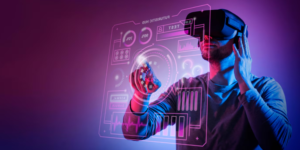In today’s fast-paced, content-driven digital world, ensuring the accuracy and originality of written material is more important than ever. Whether you’re a student submitting an academic paper, a journalist publishing a breaking story, or a marketer drafting a high-converting blog post, the pressure to deliver clean, error-free, and plagiarism-free content is real. This need has given rise to a wide array of AI-powered editing tools, most notably, AI checkers. But how do they stack up against human editors when it comes to accuracy? Who truly wins this battle?
What Are AI Checkers?
AI checker is a software tools powered by artificial intelligence that scan written content for errors, inconsistencies, plagiarism, tone, and readability. This tool, such as AI checker Pro, Grammarly, QuillBot, Turnitin, and Copyscape, uses machine learning, natural language processing, and large datasets to analyze text.
They can detect:
- Grammatical mistakes
- Spelling errors
- Plagiarized content
- Inconsistencies in tone and style
- Readability issues
The appeal is clear: AI checkers provide instant feedback, are easy to use, and often come at a lower cost than human editing services.
Strengths of AI Checkers
- Speed and Efficiency
AI tools can analyze thousands of words in seconds. For people working under tight deadlines, this speed is invaluable. You get near-instant feedback on grammar, punctuation, and even sentence structure. - Consistency
AI checkers apply the same rules uniformly across all content. They don’t get tired or distracted, ensuring a consistent review from start to finish. - 24/7 Availability
Unlike human editors, AI checkers are always available. This makes them ideal for late-night study sessions, last-minute publishing, or international teams working across time zones. - Cost-Effective
Many AI tools offer free versions or low-cost subscriptions, making them accessible to students, freelancers, and small businesses. - Real-Time Suggestions
As you write, AI checkers provide real-time suggestions, helping improve your skills over time and catching issues before they become bigger problems.
The Limitations of AI Checkers
Despite their many advantages, AI checkers have some notable limitations.
- Lack of Contextual Understanding
AI struggles with nuance. For example, it might flag a phrase as awkward or incorrect without understanding the author’s tone or intention. It may also fail to detect subtle errors in complex sentence structures. - Creativity Blind Spots
AI tools often prefer rigid grammar rules. This can stifle creative writing, where breaking rules is sometimes essential for style, voice, or effect. - Over-Reliance on Algorithms
AI checkers depend on the quality of their training data and algorithms. If a tool hasn’t been trained on certain language patterns or idioms, it may miss or misinterpret them. - Ethical Concerns with AI-Based Plagiarism Detection
Some plagiarism checkers store uploaded documents in databases, raising privacy concerns. Additionally, AI can sometimes flag falsely due to common phrases or widely used industry terminology.
The Case for Human Editors
Human editors bring a depth of understanding and critical thinking that AI cannot replicate. Whether you’re hiring a professional or relying on peer review, human editing remains invaluable.
Strengths of Human Editors:
- Contextual Understanding
Human editors understand subtlety, tone, and audience. They can recognize satire, sarcasm, humor, and poetic license – something AI still finds challenging. - Higher-Level Feedback
While AI can fix grammar and syntax, humans can critique flow, argument strength, structure, and emotional resonance – critical elements in persuasive writing or storytelling. - Adaptability
Humans can adjust based on the purpose and platform of the content. A blog post, an academic essay, and a social media caption all require different tones and formats. - Ethical Oversight
Editors can make judgment calls AI can’t—what should or shouldn’t be said, how to handle sensitive topics, or how to ensure ethical integrity in citations and references.
Limitations of Human Editors
Despite their strengths, human editors aren’t perfect either.
- Time-Consuming
Quality editing takes time. Depending on the length and complexity of the text, it may take hours or even days to receive feedback. - Cost
Professional editing services can be expensive, especially for long-form content or technical writing. - Subjectivity
Different editors may give different suggestions. What one sees as a flaw, another might see as a stylistic choice. This inconsistency can be confusing to writers. - Availability and Accessibility
Unlike AI, human editors aren’t available 24/7. Scheduling and communication can delay the editing process, especially across different time zones or deadlines.
So, Who Wins?
There’s no definitive answer to this question – it depends on your needs.
- For quick, surface-level checks, AI tools are incredibly helpful. They’re ideal for catching basic grammar, typos, and formatting errors.
- For nuanced, high-stakes content, such as a novel, academic thesis, or brand-defining marketing piece, human editors remain the gold standard.
In many cases, the best solution is a combination of both. Run your work through an AI detector first to clean up obvious issues. Then, bring in a human editor to polish the language, ensure the tone fits the audience, and check for deeper meaning and clarity.
Final Thoughts
AI checkers and human editors aren’t enemies—they’re allies. As AI develops, its capabilities will improve, but it is unlikely to replace the human touch anytime soon. For now, blending the speed and consistency of AI with the emotional intelligence and critical thinking of human editors is the most accurate and effective path forward.
Would you like this formatted into a downloadable blog post or shared as a social media thread?


